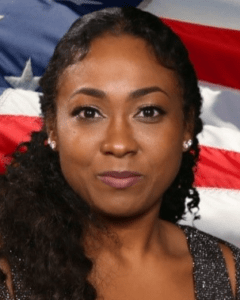Organizers: Nir Shalev1,2,3, Anna Christina (Kia) Nobre1,2,3; 1Department of Experimental Psychology, University of Oxford, 2Wellcome Centre for Integrative Neuroscience, University of Oxford, 3Oxford Centre for Human Brain Activity, University of Oxford
Presenters: Jennifer Coull, Rachel Denison, Shlomit Yuval-Greenberg, Nir Shalev, Assaf Breska, Sander Los
< Back to 2021 Symposia
The study of temporal preparation in guiding behaviour adaptively and proactively has long roots, traceable at least as far back as Wundt (1887). Additional forays into exploring the temporal dimension of anticipatory attention resurfaced during the early years of cognitive psychology. But, the field of selective temporal attention has undoubtedly blossomed in the last twenty years. In 1998, Coull and Nobre introduced a temporal analogue of the visual spatial orienting paradigm (Posner, 1980), demonstrating sizeable and reproducible effects of temporal orienting, as well as ushering in studies to study its neural systems and mechanisms. The studies built on seminal psychological demonstrations of auditory perceptual facilitation by temporal rhythms (Jones, 1976). Over the ensuing years, investigating ‘when we attend’ has become increasingly mainstay. Today we recognise that our psychological and neural systems extract temporal information from recurring temporal rhythms, associations, probabilities, and sequences to enhance perception in the various modalities as well as across them. Sophisticated experimental designs have been developed, and various approaches have been applied to investigate the principles of selective temporal attention. Are there dedicated systems for anticipating events in time leading to a common set of modulatory functions? Or, are mechanisms for temporal orienting embedded within task-specific systems and dependent on the nature of the available temporal regularities (e.g., rhythms or associations). In the following symposium, we illustrate contemporary research on selective temporal attention by bringing together researchers from across the globe and using complementary approaches. Across the presentations, researchers explore the roles of temporal rhythms, associations, probabilities, and sequences using psychophysics, eye movements, neural measurements, neuropsychology, developmental psychology, and theoretical models. In a brief introduction, Coull and Nobre will comment on the context of their initial temporal orienting studies and on the major strands and developments in the field. The first research presentation by Rachel Denison (with Marisa Carrasco) will introduce behavioural and neurophysiological studies demonstrating the selective nature of temporal attention and its relative costs and benefits to performance. The second presentation by Shlomit Yuval-Greenberg will show how anticipatory temporal attention influences oculomotor behaviour, with converging evidence from saccades, micro-saccades, and eye-blinks. The third presentation by Nir Shalev (with Sage Boettcher) will show how selective temporal attention generalises to dynamic and extended visual search contexts, picking up on learned conditional probabilities to guide perception and eye movement in adults and in children. The fourth presentation by Assaf Breska will provide evidence for a double dissociation between temporal attention based on temporal rhythms vs. associations by comparing performance of individuals with lesions in the cerebellum vs. basal ganglia. The final presentation by Sander Los will introduce a theoretical and computational model that proposes to account to various effects of temporal orienting across multiple time spans – from between successive trials to across contexts. A panel discussion will follow, to consider present and forthcoming research challenges and opportunities. In addition to considering current issues in selective temporal attention, our aim is to lure our static colleagues into the temporal dimension.
Presentations
20 years of temporal orienting: an introduction
Jennifer Coull1,2, Anna Christina Nobre3,4,5; 1Aix-Marseille Universite, France, 2French National Center for Scientific Research (CNRS), 3Department of Experimental Psychology, University of Oxford, 4Wellcome Centre for Integrative Neuroscience, University of Oxford, 5Oxford Centre for Human Brain Activity, University of Oxford
In a brief introduction to the symposium, we will spell out the main questions and issues framing cognitive neuroscience studies of attention when we conducted our first temporal orienting combining behavioural methods with PET, fMRI, and ERPS. We will reflect on the strands of research at the time which helped guide our thinking and interpretation of results; and then consider the rich, varied, and many ways in which the temporal attention field has evolved into its exciting, dynamic, and multifaceted guise.
The dynamics of temporal attention
Rachel Denison1, Marisa Carrasco1; 1Department of Psychology, New York University
Selection is the hallmark of attention: processing improves for attended items but is relatively impaired for unattended items. It is well known that visual spatial attention changes sensory signals and perception in this selective fashion. In the research we will present, we asked whether and how attentional selection happens across time. Specifically, we investigated voluntary temporal attention, the goal-driven prioritization of visual information at specific points in time. First, our experiments revealed that voluntary temporal attention is selective, resulting in perceptual tradeoffs across time. Perceptual sensitivity increased at attended times and decreased at unattended times, relative to a neutral condition in which observers were instructed to sustain attention. Temporal attention changed the precision of orientation estimates, as opposed to an all-or-none process, and it was similarly effective at different visual field locations (fovea, horizontal meridian, vertical meridian). Second, we measured microsaccades and found that directing voluntary temporal attention increases the stability of the eyes in anticipation of a brief, attended stimulus, improving perception. Attention affected microsaccade dynamics even for perfectly predictable stimuli. Precisely timed gaze stabilization can therefore be an overt correlate of the allocation of temporal attention. Third, we developed a computational model of dynamic attention, which incorporates normalization and dynamic gain control, and accounts for the time-course of perceptual tradeoffs. Altogether, this research shows how voluntary temporal attention increases perceptual sensitivity at behaviorally relevant times, and helps manage inherent limits in visual processing across short time intervals. This research advances our understanding of attention as a dynamic process.
Oculomotor inhibition as a correlate of temporal orienting
Shlomit Yuval-Greenberg1,2, Noam Tal1, Dekel Abeles1; 1School of Psychological Sciences, Tel-Aviv University, 2Sagol School of Neuroscience, Tel-Aviv University
Temporal orienting in humans is typically assessed by measuring classical behavioral measurements, such as reaction times (RTs) and accuracy-rates, and by examining electrophysiological responses. But these methods have some disadvantages: RTs and accuracy-rates provide only retrospective estimates of temporal orientation, and electrophysiological markers are often difficult to interpret. Fixational eye movements, such as microsaccades, occur continuously and involuntarily even when observers attempt to suppress them by holding steady fixation. These continuous eye movements can provide reliable and interpretable information on fluctuations of cognitive states across time, including those that are related to temporal orienting. In a series of studies, we show that temporal orienting is associated with the inhibition of oculomotor behaviors, including saccades, microsaccades and eye-blinks. First, we show that eye movements are inhibited prior to predictable visual targets. This effect was found for targets that were anticipated either because they were embedded in a rhythmic stream of stimulation or because they were preceded by an informative temporal cue. Second, we show that this effect is not specific to the visual modality but is present also for temporal orienting in the auditory modality. Last, we show that the oculomotor inhibition effect of temporal orienting is related to the construction of expectations and not to the estimation of interval duration, and also that it reflects a local trial-by-trial anticipation rather than a global arousal state. We conclude that pre-target inhibition of oculomotor behaviors is a reliable correlate of temporal orienting processes of various types and modalities.
Spatial-temporal predictions in a dynamic visual search
Nir Shalev1,2,3, Sage Boettcher1,2,3, Anna Christina Nobre1,2,3; 1Department of Experimental Psychology, University of Oxford, 2Wellcome Centre for Integrative Neuroscience, University of Oxford, 3Oxford Centre for Human Brain Activity, University of Oxford
Our environment contains many regularities that allow the anticipation of upcoming events. Waiting for a traffic light to change, an elevator to arrive, or using a toaster: all contain temporal ‘rules’ that can be learned and used to improve performance. We investigated the guidance of spatial attention based on spatial-temporal associations using a dynamic variation of a visual search task. On each trial, individuals searched for eight targets among distractors, all fading in and out of the display at different locations and times. The screen was split into four distinct quadrants. Crucially, we rendered four targets predictable by presenting them repeatedly in the same quadrants and times throughout the task. The other four targets were randomly distributed in their locations and onsets. At the first part of our talk, we will show that participants are faster and more accurate in detecting predictable targets. We identify this benefit when testing both young adults (age 18-30), and in a cohort of young children (age 5-6). At the second part of the talk, we will present a further inquiry about the source of the behavioural benefit, contrasting sequential-priming vs. memory guidance. We do so by introducing two more task variations: one in which the onsets and locations of all targets occasionally repeated in successive trials; and one in which the trial pattern was occasionally violated. The results suggest that both factors, i.e., priming and memory, provide a useful source for guiding attention.
Distinct mechanisms of rhythm- and interval-based attention shifting in time
Assaf Breska1; 1Department of Psychology, University of California, Berkeley, 2Helen Wills Neuroscience Institute, University of California, Berkeley
A fundamental principle of brain function is the use of temporal regularities to predict the timing of upcoming events and proactively allocate attention in time accordingly. Historically, predictions in rhythmic streams were explained by oscillatory entrainment models, whereas predictions formed based on associations between cues and isolated interval were explained by dedicated interval timing mechanisms. A fundamental question is whether predictions in these two contexts are indeed mediated by distinct mechanisms, or whether both rely on a single mechanism. I will present a series of studies that combined behavioral, electrophysiological, neuropsychological and computational approached to investigate the cognitive and neural architecture of rhythm- and interval-based predictions. I will first show that temporal predictions in both contexts similarly modulate behavior and anticipatory neural dynamics measured by EEG such as ramping activity, as well as phase-locking of delta-band activity, previously taken as signature of oscillatory entrainment. Second, I will show that cerebellar degeneration patients were impaired in forming temporal predictions based on isolated intervals but not based on rhythms, while Parkinson’s disease patients showed the reverse pattern. Finally, I will demonstrate that cerebellar degeneration patients show impaired temporal adjustment of ramping activity and delta-band phase-locking, as well as timed suppression of beta-band activity during interval-based prediction. Using computational modelling, I will identify the aspects of neural dynamics that prevail in rhythm-based prediction despite impaired interval-based prediction. To conclude, I will discuss implications for rhythmic entrainment and interval timing models, and the role of subcortical structures in temporal prediction and attention.
Is temporal orienting a voluntary and controlled process?
Sander Los1, Martijn Meeter1, Wouter Kruijne2; 1Vrije Universiteit Amsterdam, 2University of Groningen
Temporal orienting involves the allocation of attentional resources to future points in time to facilitate the processing of an expected target stimulus. To examine temporal orienting, studies have varied the foreperiod between a warning stimulus and a target stimulus, with a cue specifying the duration of the foreperiod at the start of each trial with high validity (typically 80%). It has invariably been found that the validity of the cue has a substantial behavioral effect (typically expressed in reaction times) on short-foreperiod trials but not on long-foreperiod trials. The standard explanation of this asymmetry starts with the idea that, at the start of each trial, the participant voluntarily aligns the focus of attention with the moment specified by the cue. On short foreperiod trials, this policy leads to an effect of cue validity, reflecting differential temporal orienting. By contrast, on long-foreperiod trials, an initially incorrect early focus of attention (induced by an invalid cue) will be discovered during the ongoing foreperiod, allowing re-orienting toward a later point in time, thus preventing behavioral costs. In this presentation, we challenge this view. Starting from our recent multiple trace theory of temporal preparation (MTP), we developed an alternative explanation based on the formation of associations between the specific cues and foreperiods. We will show that MTP accounts naturally for the typical findings in temporal orienting without recourse to voluntary and controlled processes. We will discuss initial data that serve to distinguish between the standard view and the view derived from MTP.
< Back to 2021 Symposia
 Cibu Thomas
Cibu Thomas




